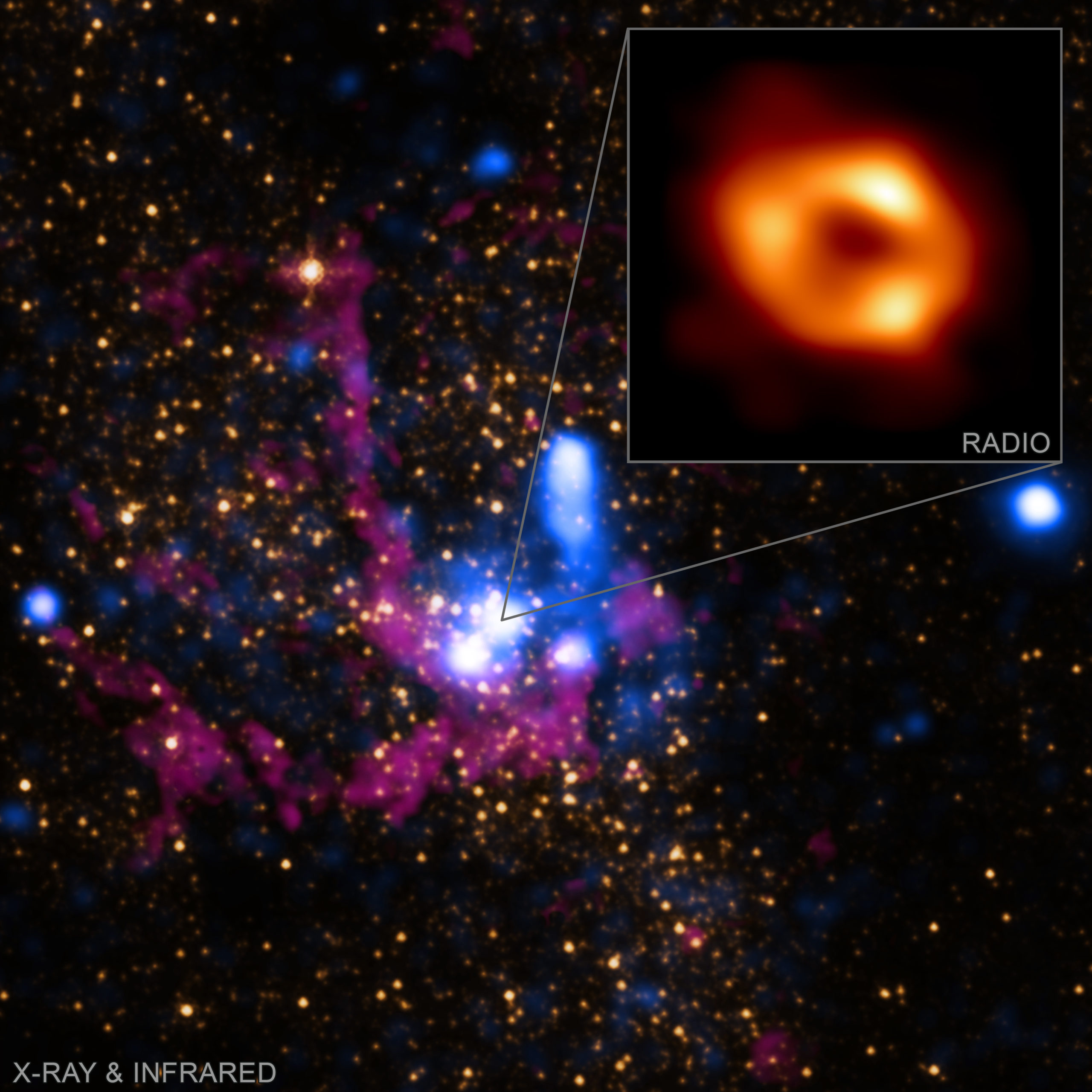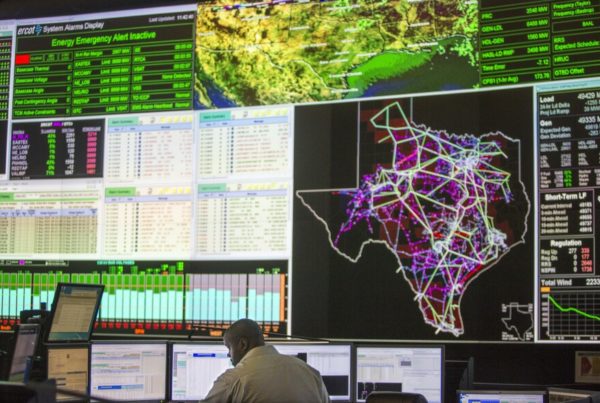For the first time, we’re able to see what a black hole at the heart of our Milky Way galaxy looks like. It’s 27,000 light-years from Earth, so it’s hard to complain that the photo is slightly blurry. It’s also invisible by nature, so this photo now has made visible some key characteristics of the black hole.
Alex Tetarenko, an astrophysics researcher with Texas Tech University, contributed to this discovery. She is a NASA Einstein Fellow with Texas Tech’s Department of Physics and Astronomy and spoke with the Texas Standard about the black hole and what’s going on inside it.
This transcript has been edited lightly for clarity:
Texas Standard: Let’s describe the image, if we can. What I’ve seen online looks a bit like something of a red blob, a mystery blob, sort of out in a black abyss. How would you describe it?
Alex Tetarenko: Yeah. So it actually looks kind of like a bright ring, almost like a donut, as we have this really kind of dark depression in the center. And what we’re actually seeing is hot gas swirling around the black hole. And we see it like this ring kind-of donut because the strong gravity of the black hole actually bends light rays around it.
Wow. That’s amazing. So it’s not just sort of visible to the human eye, I suppose. So these are heat patterns that we’re picking up?
So what we’re observing is light at radio wavelengths. So this is light that has much longer wavelengths than our eye can see, which is optical light.
Tell us what’s going on inside that black hole, Sagittarius A*, as best we know.
We know that supermassive black holes likely exist at the center of all galaxies, but this one is our very own supermassive black hole right at the center of our own galaxy, the Milky Way. If we compare it to other black holes, like the one we already imaged in 2019 at the center of the M87 galaxy, our black hole is actually much smaller and quieter. So it eats matter a lot less frequently than, say, the M87 black hole. And that’s really interesting because we’re able to compare the two and we have a whole spectrum of different behaviors coming from black holes that we could compare.
So what’s actually going on in our black hole?
What it’s doing is it’s actually eating gas and dust and stars, all this kind of matter that swirls around it.
What’s happening when it, as you describe it, eats this matter? Where is that matter going?
That’s a really good question. We don’t know what actually exists in the center of black holes, and we really can’t, because once matter passes what we call the event horizon, it can never escape a black hole. So that’s why we actually call them black holes: Because they’re black. Not even light can escape. We don’t know where that matter is actually going.
You mentioned “at the center” of every galaxy – is there a kind of a geographic center, such as it is? Or is that even relevant when you’re talking about galaxies?
So with with our galaxy, for example, it’s a spiral galaxy. So we have the center, and then we have all this gas and dust and spiral arms going around it. It’s almost kind of like a disk; we have a big disk circling around the center.
How long have researchers like yourself been trying to get an image of this black hole like the one that that we’re seeing now?
Oh, quite a long time. The technology and instruments that we use have been developed for decades now, so it’s been quite a long journey for a lot of people. But the data that we actually took of Sagittarius A* was back in 2017, so we’ve been analyzing this data for about five years. And I know that seems like a long time, but it’s actually quite common in astronomy to take this amount of time to actually figure out what we’re seeing. You know, good science takes time.
What does this mean for the future understanding of this black hole – and beyond that, our place in the galaxy?
Excellent question. So the image that we’ve made, we’ve shown that it’s fully consistent with what we expect from Einstein’s theory of general relativity. There’s still quite a lot of physics encoded in that image that we don’t understand yet, like the properties of this swirling gas around the black hole, magnetic fields, whether the black hole is spinning. Why is the gas around the black hole changing in brightness so quickly?. You know, there’s so much information we have yet to extract from that image. So there’s a lot to study in the future.














